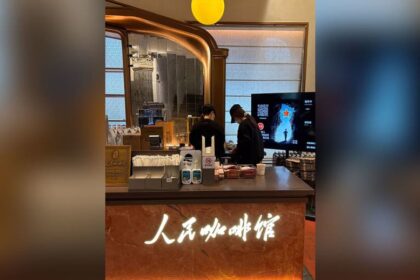Why trade fairs are becoming job markets
With graduate hiring squeezed and entry level posts scarce, a growing number of young Chinese are taking their resumes to an unlikely venue for career breakthroughs, the country’s giant trade fairs and expos. These sprawling events bring together thousands of manufacturers, importers, logistics providers, retailers, and technology firms under one roof. For jobseekers struggling to get responses through online portals, an expo offers something different, a place to meet decision makers face to face, learn what skills are valued, and sometimes secure short contracts on the spot.
- Why trade fairs are becoming job markets
- The state of youth unemployment in China
- Inside the expo hustle
- Where the jobs are, and why the mismatch persists
- What authorities are doing to help
- Trade tensions and the jobs picture
- Risks, realities, and the gig alternative
- How to use a trade expo to find a job
- What to Know
China runs some of the largest trade gatherings in the world, including the Canton Fair in Guangzhou and the China International Import Expo in Shanghai. Regional shows in manufacturing hubs such as Yiwu also draw massive crowds. Exhibitors need people who can interpret, greet buyers, demonstrate products, manage live streams, and handle sales leads. Students and recent graduates have spotted an opening. They walk the show floor, trade business cards, scan QR codes, and follow up later with targeted applications. Others pick up temporary shifts as booth assistants or interpreters during the event, hoping those gigs can turn into something more stable.
This trend reflects a simple calculation. If the formal job market is clogged, go where employers gather. The expo floor is not a traditional recruitment hall, yet it doubles as one during tough times. Exhibitors and visitors are already in a dealmaking mindset, which can help a prepared candidate stand out.
The state of youth unemployment in China
Youth joblessness in China has remained elevated since the pandemic. Official data show that the unemployment rate for urban residents aged 16 to 24 peaked at 21.3 percent in mid 2023 before authorities paused publication and later revised the method to exclude full time students. Since data resumed, the rate has stayed high, often ranging between 17 and 19 percent in recent months. A seasonal surge follows each summer graduation wave when roughly 12 million people enter the market at once, intensifying competition for limited openings.
Behind the numbers is a complex picture. The property downturn has cut construction related hiring, private firms are cautious about expansion, and some sectors that once absorbed many graduates have restructured. The result is a mismatch between what many new graduates studied and the roles companies need to fill immediately, especially roles that demand practical experience.
At a recent briefing, National Bureau of Statistics chief economist Fu Linghui pointed to persistent domestic weakness weighing on hiring, and he acknowledged the pressure on firms. In remarks carried by state media, Fu said that “some enterprises are facing operational difficulties.”
National Bureau of Statistics chief economist Fu Linghui said the economy still faces weak demand and that “some enterprises are facing operational difficulties.”
The pressure is not confined to teenagers and early twenty somethings. Among 25 to 29 year olds, unemployment has also edged higher at times, hinting at stalled early careers and delayed promotions across cohorts. As long as demand remains soft, each graduating class adds to the challenge.
Inside the expo hustle
On the ground, the expo strategy can look straightforward. Arrive early, wear comfortable shoes, and plan a route through the halls. Many exhibitors list specific skill needs on placards at their booths, such as English, Vietnamese, or Arabic interpretation, social media operations, 3D modeling, or after sales support. Jobseekers collect names of hiring managers and scan a flurry of QR codes that link to corporate WeChat groups or mini programs for applications. Some candidates carry a one page profile that highlights languages, software skills, and short projects, which is easier to hand over than a thick resume.
For some, a fair offers a reset after a setback. One recent graduate, An Ran, earned a bachelor’s degree in English in 2024 and was laid off by a small foreign trade firm. She now uses fairs to map the terrain and find leads.
“I go to these expos to explore and broaden my view of what is out there, then I go through these companies’ websites to send out job applications,” said An Ran. “The employment environment is horrible. Many of the smaller companies are just screening young people, not really training them.”
Expos also create a steady market for temporary roles. Booth assistants handle registration and foot traffic, interpreters sit in on buyer meetings, product demonstrators show how items work, and live stream hosts present new gadgets to online audiences. Day rates vary by city and industry, and the work can be demanding, but it provides a path to references, a portfolio of real tasks, and contacts who remember a diligent worker when a full time post opens.
Temporary roles that can open doors
Short contracts are not guaranteed to convert, yet they offer visibility. A graduate who interprets for the same exporter over several fairs becomes part of that team’s routine. Sales managers often prefer to hire someone who already understands the client list and product lines, even if the initial assignment was temporary. The best outcomes come when candidates treat each shift like an extended interview, taking notes after every buyer meeting and following up professionally.
There are pitfalls. Some employers use fairs mainly to harvest resumes or to fill low paid shifts with no plan to hire. Candidates who ask clear questions about workflow, training, and next steps are more likely to identify serious opportunities and avoid being strung along.
Where the jobs are, and why the mismatch persists
Hiring has been uneven across sectors. Services like hospitality and catering tend to bring on younger workers when tourism improves. Information technology, logistics, and education can also absorb graduates during upswings. Yet companies in property related fields remain under stress, and private firms in consumer sectors are careful with headcount.
At the same time, manufacturers in coastal provinces still need technicians, quality inspectors, and sales coordinators who can communicate with overseas buyers. Many new graduates majored in business or liberal arts, which can be valuable for sales and marketing, yet employers often expect hands on skills or experience with inventory systems, 3D design, or supply chain software. Training budgets are tighter than they were a decade ago, so companies favor candidates who can contribute immediately.
Premier Li Qiang has urged officials to keep a close eye on corporate pain points. In a meeting covered by state media, he called for “struggling companies to be heard and their difficulties truly addressed,” a reminder that weak private sector confidence can slow hiring even when order books stabilize.
Premier Li Qiang said firms’ difficulties must be addressed and instructed officials to ensure “struggling companies [are] to be heard and their difficulties truly addressed.”
The mismatch also reflects expectations. Graduates aiming for white collar office roles may overlook factory based positions that pay reasonably and offer promotion tracks. Employers, meanwhile, worry about attrition if young hires see factory work as a stopgap. This gap in expectations keeps many posts unfilled while graduates continue to search.
What authorities are doing to help
Policymakers have rolled out incentives to keep payrolls steady and to nudge firms to recruit young people. A recent State Council notice expanded social insurance subsidies, increased unemployment insurance refunds for smaller firms, and allowed companies under strain to defer certain social insurance contributions. The plan also includes a one time payment for employers who sign contracts and pay full insurance for unemployed youths aged 16 to 24 for at least three months.
The orientation is clear. Officials want companies to hold on to staff, take chances on first time hires, and convert more internships into entry level roles. The State Council spelled out the political stakes in unusually direct language, telling local governments to treat jobs as a top priority and to adjust measures as conditions change.
In its notice, the State Council said local governments and departments must “take political responsibility for stabilising employment,” track implementation, and roll out new measures as needed.
Alongside subsidies, authorities are expanding access to vocational education by letting unemployed youths and migrant workers enroll in technical schools with relaxed age limits. Cities are hosting themed job fairs for recent graduates and creating service desks to match young candidates with small firms. These moves can improve the pipeline, although the pace of hiring still depends on demand.
Trade tensions and the jobs picture
Global conditions add another layer. Tariffs and export controls have pushed Chinese exporters to diversify markets and to rework supply chains. That shift is visible in trade hubs like Yiwu, where new digital trade centers and cross border logistics services help sellers reach Southeast Asia, the Middle East, and Africa. When exporters chase new buyers, they often turn to fairs to showcase products and to hire staff who speak target market languages.
The strategic message from Beijing is that China will compete through persistence, technology upgrading, and market diversification. In a speech this year, President Xi Jinping framed the stance in historical terms.
President Xi Jinping said, “For more than 70 years, China has always relied on self-reliance and hard work for development… it has never relied on anyone’s gifts and is unafraid of any unreasonable suppression.”
Trade decoupling still carries risks for jobs. If export orders drop, temporary hires can be the first to go. A weaker currency can support exports, yet it also reflects domestic strain. More destination markets create buffers, but protectionist measures are spreading and can blunt gains. Against that backdrop, fairs grow more important as dealmaking platforms and as informal talent markets where firms look for multilingual staff, live commerce hosts, and agile sales coordinators.
Risks, realities, and the gig alternative
The tight job market has drawn many young people into gig work. Delivery driving, live streaming for e commerce, tutoring, and retail shifts offer quick entry and cash flow. These roles can build practical skills, from customer service to analytics dashboards for short video platforms, and they sometimes lead to steady posts at small brands that scale up.
There are trade offs. Gig roles usually lack social insurance contributions and offer little in the way of training. Career ladders are unclear, and income can be volatile when algorithms change or demand dips. Some graduates who quit corporate tracks hoping for a simpler life find that managing a micro business, a livestream channel, or a coffee shop is just as stressful. The best strategy blends pragmatism with learning. Short stints that build a portfolio and broaden contacts can be valuable, as long as candidates document what they achieved and keep one foot in formal recruitment channels.
How to use a trade expo to find a job
Expos work because they put candidates in front of hiring managers who are focused on doing business that day. Preparation turns chance encounters into real leads. A thoughtful plan can raise the odds that a conversation ends with a next step.
- Map the floor in advance. Identify target exhibitors and the halls they occupy. Prioritize firms that match your language and software skills.
- Prepare a one page profile that lists languages, tools, and two or three concrete projects. Bring both digital and paper versions.
- Focus on the right people. Ask who handles recruiting or team staffing at the booth. A five minute chat with a team lead beats a generic QR drop.
- Ask about short contracts. Temporary interpreting, live streaming, or sales support can convert if you deliver value and follow up professionally.
- Track every contact. After the fair, send a short message that reminds them who you are, refers to a specific conversation, and links to a portfolio.
- Show you understand the business. Read product catalogs, watch a live demo, and be ready with two practical suggestions tailored to the booth.
- Protect yourself. Confirm pay, hours, and social insurance for temporary roles in writing. Avoid unpaid trials that have no clear purpose.
- Turn gigs into proof. Keep screenshots of analytics, buyer lists you built, or process checklists you created. Those artifacts impress future employers.
What to Know
- With youth unemployment stuck near the high teens by the revised method, many graduates are using trade fairs as informal job markets.
- Expos offer networking and temporary roles such as interpreting, live commerce hosting, and product demonstrations that can lead to full time offers.
- Weak domestic demand, a property slump, and cautious private sector hiring have made entry level positions harder to secure.
- Officials have introduced subsidies for firms that hire unemployed youths, higher unemployment insurance refunds, and expanded access to vocational education.
- Trade tensions push exporters to find new markets, which raises demand for multilingual staff and sales coordinators at fairs.
- Gig work remains a safety valve but often lacks benefits and clear career paths, so candidates should convert short stints into a tangible portfolio.
- The most effective expo strategy combines targeted booth outreach, short contract work that proves value, and disciplined follow up after the event.












